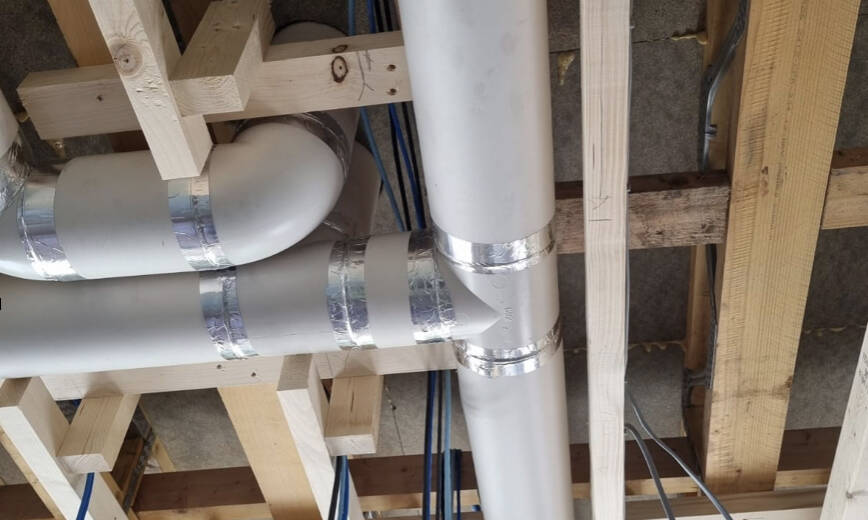MVHR in Homes

Over the last few decades homes have become much more energy efficient due to the increased standards for insulation and air tightness, with modern homes more than twice as air tight as they used to be. However, this positive change in the fabric and function of buildings, comes with the concern over the indoor air quality of modern and renovated dwellings. As an increasing number of people work from home, the long-term exposure to polluted and oxygen depleted air is likely to have negative health implications, commonly referred to as sick home syndrome.
Mechanical Ventilation with Heat Recovery (MVHR) is a whole house ventilation system that both supplies fresh air and extracts stale air throughout a property, but also captures most of the lost heat from the extracted air. Efficient and low energy, MVHR is used to maintain good indoor air quality in well insulated buildings and is an integral component in Passive House construction. It is designed to run quietly and continuously in the background and will not be affected if you open your windows, yet it eliminates the need for unsightly and draughty trickle vents and noisy extractor fans. A constant supply of fresh air can significantly reduce condensation, and in turn then reduce mildew. Pollen filters are frequently added as a benefit to hayfever sufferers.
The heat recovery ventilator will capture around 90% of the heat that would otherwise have been lost in your property which can help reduce your carbon footprint and heating costs. Typically fresh air is supplied to the far corners of habitable rooms, and extracted through bathrooms and utility rooms, this means the maximum amount of stale/humid and warm air can be extracted and heat recovered.
Indoor air quality is vital to creating a healthy home environment and relying on outdated technologies won’t be sufficient to keep the whole house well ventilated. With the correct system the house will always feel fresh even on days you choose to make stocks or roast a joint. No other ventilation method is as predictable and consistent in providing fresh air as this type of system.
MVHR can be installed both as part of the renovation of an existing property as well as in a new build house. A heat exchanger is the heart of the system, with fans in each zone to provide the air movement. Most systems require ducting to each room which require careful design consideration to make sure these are hidden. MVHR units are fairly sizeable and ideally should be located somewhere central to minimise long duct runs, with access for maintenance. A good location for these would be an attic space.
There are many benefits to MVHR including better indoor air quality, filtered air, humidity control, more comfort and energy savings. While there is an upfront cost on the installation, this will be offset in the long term savings on heating costs.







